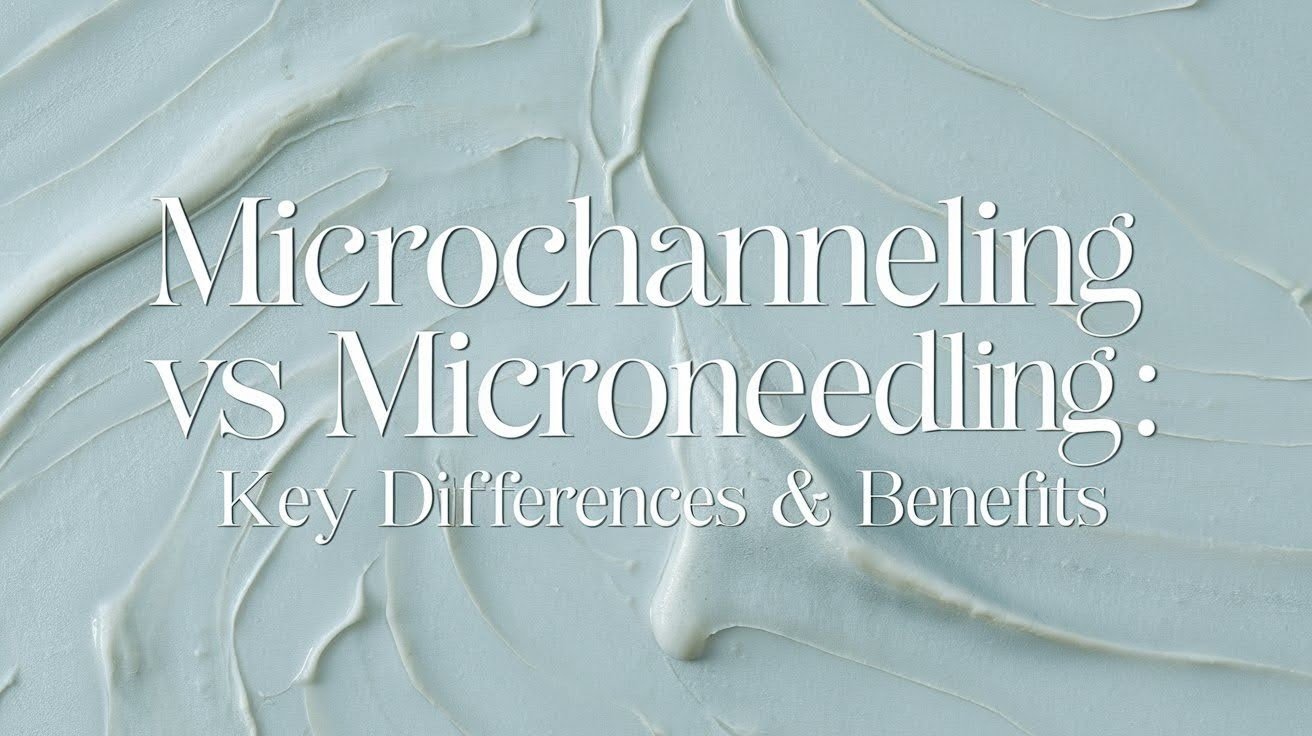5 Characteristics of Dehydrated Skin

Although they sound similar, dry skin and dehydrated skin are two distinct conditions. Many people wonder why their skin doesn’t get better after treating the wrong one.
I’ve spent months being frustrated because I mistook the two myself. Everything changed for me when I realized the five signs of dehydrated skin.
You will find how dehydrated skin differs from dry skin in this guide. I’ll outline the five main symptoms to look out for, explain why they occur, and offer professional advice on how to rehydrate.
Additionally, you’ll find which habits exacerbate the situation and which products truly help. By the end, you’ll be able to determine whether your skin is dehydrated and what to do about it.
Dehydrated Skin vs. Dry Skin
Understanding the difference between dehydrated skin helps you choose the right products and treatments for your specific condition.
|
Factor |
Dry Skin |
Dehydrated Skin |
|
What It Lacks |
Natural oils (sebum) |
Water content |
|
Key Symptoms |
Flaking, cracking, rough patches |
Tightness, dullness, fine lines |
|
Who It Affects |
Specific skin type (dry skin type) |
Any skin type (oily, combination, or dry) |
|
Feels Like |
Rough, uncomfortable, flaky |
Tight, dull, lacking bounce |
|
Treatment Needed |
Oil-based products that replace sebum |
Water-based products that boost moisture |
|
Wrong Treatment Result |
Water-based products won’t replace missing oils |
Heavy oils may clog pores without fixing the problem |
List of 5 Characteristics of Dehydrated Skin
Let’s have a better look at the characteristics:
1. Dull and Lackluster Appearance

Dehydrated skin loses its natural radiance and appears flat, tired, and lifeless regardless of your skincare routine or sleep quality.
Why It Happens: Dehydration reduces your skin’s ability to reflect light properly. Healthy, hydrated skin has a plump surface that bounces light back.
When water levels drop, the surface becomes uneven and can’t reflect light the same way.
How to Identify It: Your skin appears less radiant even after moisturizing. The glow you once had seems to be gone. Your complexion looks one-dimensional instead of vibrant. Makeup may not apply smoothly or look fresh.
2. Fine Lines and Tightness
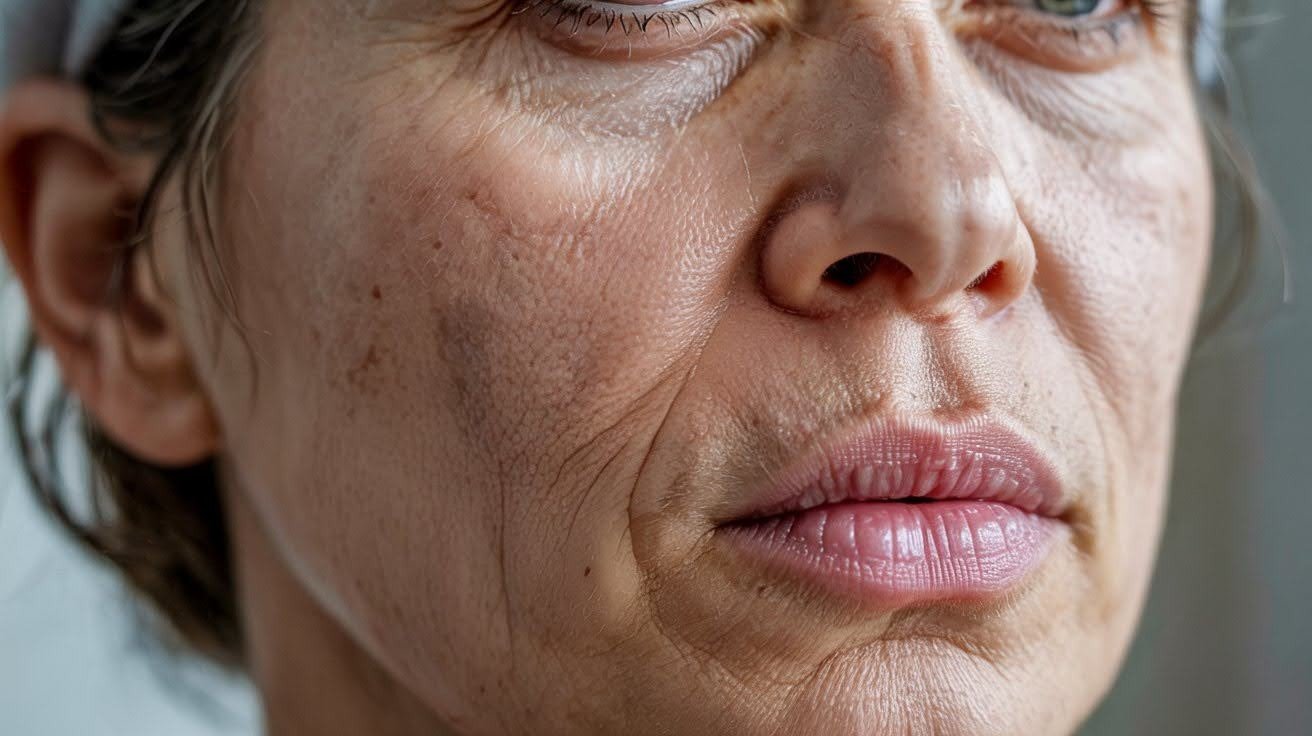
Dehydrated skin shows temporary fine lines and feels uncomfortably tight, especially after cleansing or in dry environments like airplanes.
Why It Happens: Lack of internal moisture makes skin cells shrink slightly. When cells don’t have adequate water, they can’t maintain their full shape. This shrinkage makes lines more visible.
What You’ll Notice: Tiny lines or creases appear around your eyes and mouth suddenly. These lines improve with proper hydration, unlike true wrinkles from aging.
Your skin feels tight and uncomfortable, particularly after washing. This sensation worsens in cold weather or dry indoor environments.
3. Itching and Rough Texture
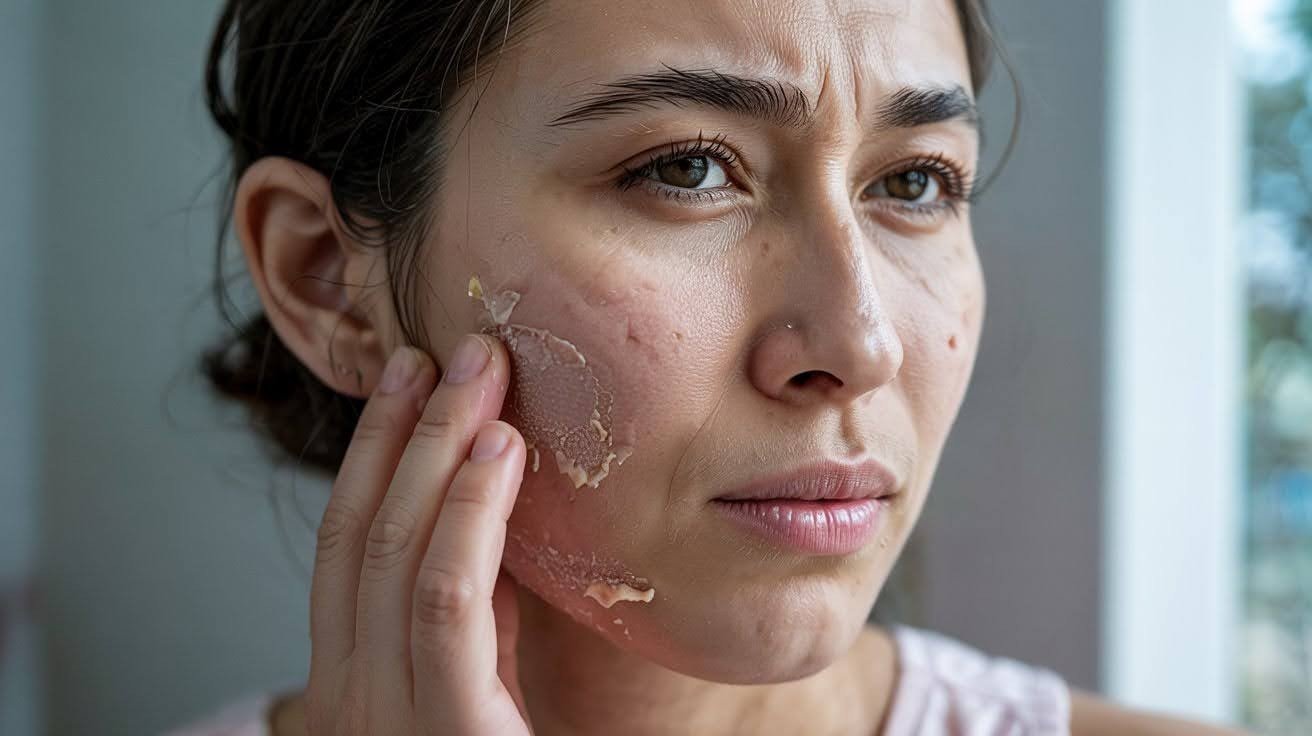
Dehydrated skin feels rough to the touch and may itch frequently, signaling that your skin barrier is compromised and struggling.
Why It Happens: Dehydration weakens your skin barrier significantly. This protective layer keeps moisture in and irritants out.
When water levels drop, the barrier can’t function properly and becomes prone to irritation.
Common Signs: You’ll experience tightness, flakiness, and itching after cleansing. Exposure to dry air makes symptoms worse quickly.
The rough texture feels bumpy and uneven when you touch your face, even in areas that were always soft before.
4. Sunken or Tired-Looking Eyes
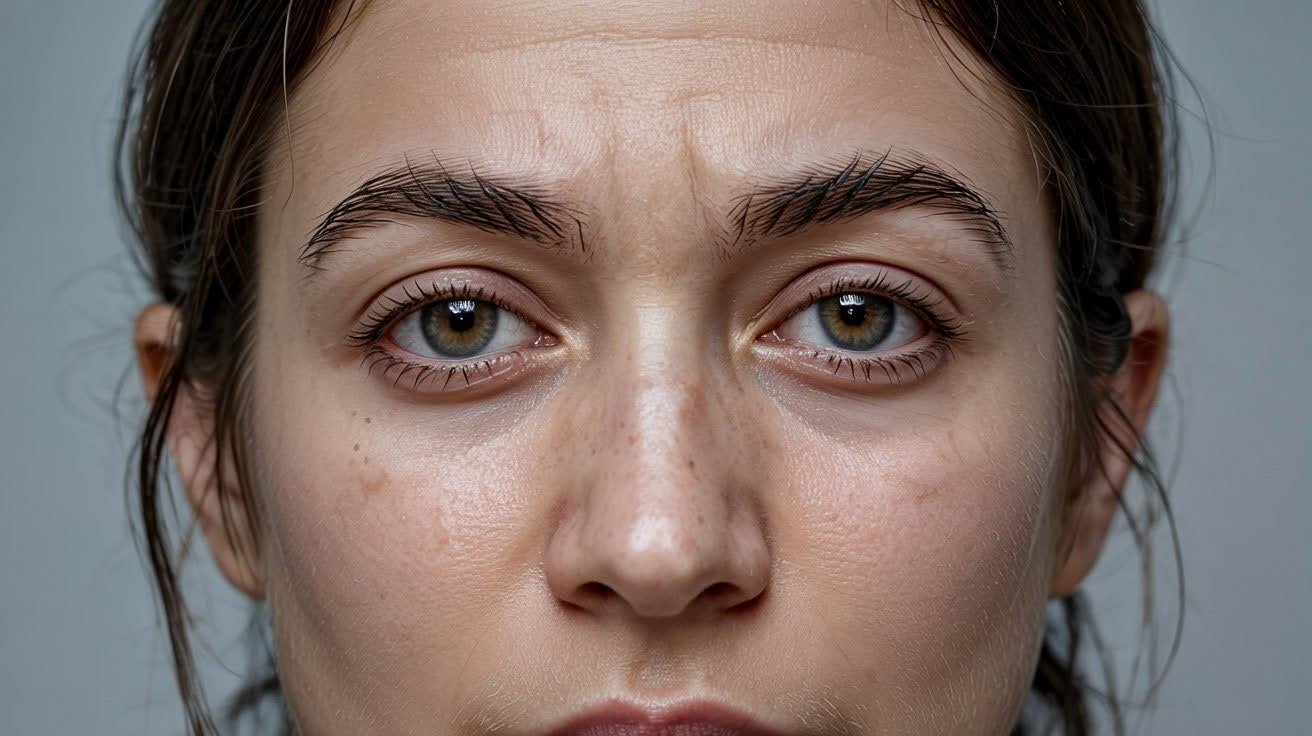
Dehydrated skin around your eyes loses volume and elasticity, creating a hollow, exhausted appearance even after adequate rest and sleep.
Why It Happens: The skin under your eyes loses elasticity and volume when moisture levels drop. This delicate area has thinner skin than the rest of your face and shows dehydration effects first.
Visible Clues: Dark circles appear or worsen noticeably. Puffiness may develop as your body tries to compensate.
A sunken appearance around the eyes makes you look exhausted. The combination creates an overall fatigued look that makeup can’t fully hide.
5. Loss of Elasticity (Pinch Test)
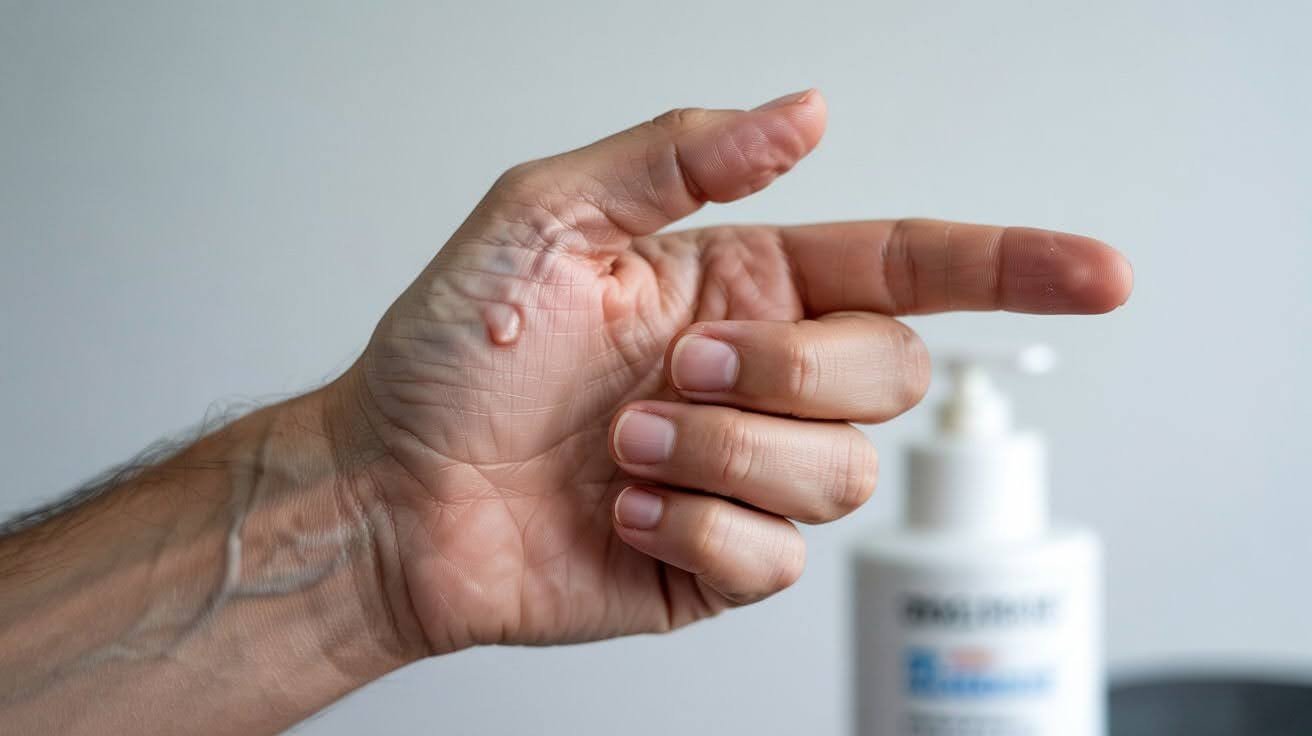
The pinch test provides a quick, reliable way to check your skin’s hydration level and confirm whether dehydration is your issue.
How to Check:
Gently pinch a small patch of skin on your arm or the back of your hand. Use your thumb and forefinger to lift the skin slightly. Watch how quickly the skin returns to its normal position.
What It Reveals:
Well-hydrated skin snaps back immediately. If the skin takes longer to return to normal, you’re lacking hydration.
The longer the delay, the more severe the dehydration. This test works because water keeps skin cells plump and springy.
Expert Tips: How to Rehydrate Skin
- Drink water regularly throughout the day, aiming for 8 glasses minimum. Consistent water intake matters more than drinking large amounts at once. Keep a water bottle with you as a reminder.
- Eat water-rich foods like cucumbers, watermelon, oranges, and leafy greens. These foods provide water plus vitamins that support skin health. They hydrate from the inside out.
- Use hydrating skincare products with hyaluronic acid, glycerin, or ceramides. Hyaluronic acid holds 1000 times its weight in water. Glycerin attracts moisture from the air. Ceramides repair your barrier.
- Avoid harsh cleansers that strip your skin’s natural moisture. Choose gentle, creamy cleansers instead of foaming ones. Harsh products damage your barrier and worsen dehydration.
- Skip over-exfoliation that removes your protective barrier. Limit exfoliation to 1-2 times per week maximum. More frequent exfoliation strips away the moisture your skin desperately needs.
- Take warm showers instead of hot ones that strip moisture quickly. Hot water damages your skin barrier and causes immediate water loss. Warm water cleans effectively without damage.
Conclusion
For too long, I disregarded the five signs of dehydrated skin, assuming that my drabness was simply fatigue.
My skin changed in a matter of weeks after I began using hydrating serums and drinking more water.
You can now quickly address the early warning signs. Add one hydrating product to your routine after completing the pinch test today.
Your skin is waiting to glow. Post your dehydration victories or setbacks in the comments section below!
Frequently Asked Questions
Can oily skin be dehydrated?
Yes, oily skin can absolutely be dehydrated. Dehydration is about water content, not oil production. Your skin may produce excess oil to compensate for a lack of water.
How long does it take to rehydrate dehydrated skin?
Most people see improvement within 1-2 weeks of consistent hydration habits. Drinking more water and using hydrating products daily speeds recovery. Severe dehydration may take 3-4 weeks.
What’s the best ingredient for dehydrated skin?
Hyaluronic acid is the best ingredient for dehydrated skin. It holds up to 1000 times its weight in water and plumps skin immediately. Glycerin and ceramides also work excellently.
Does drinking more water help dehydrated skin?
Yes, drinking more water helps dehydrated skin from the inside. Aim for at least 8 glasses daily. Combine internal hydration with topical products for the best results.
Can dehydrated skin cause acne?
Yes, dehydrated skin can trigger acne. When skin lacks water, it overproduces oil to compensate. This excess oil clogs pores and creates breakouts. Proper hydration often reduces acne.








